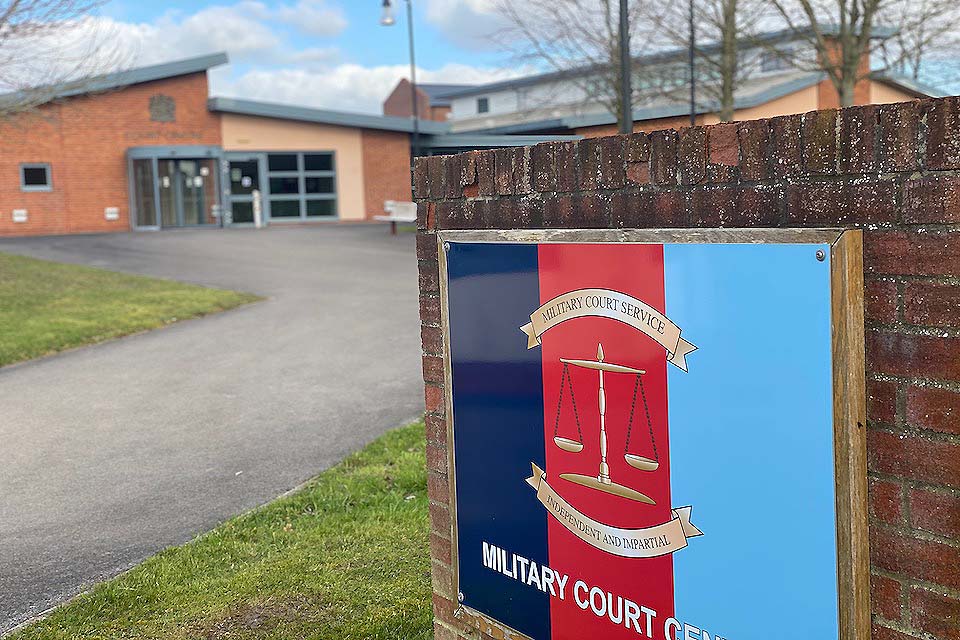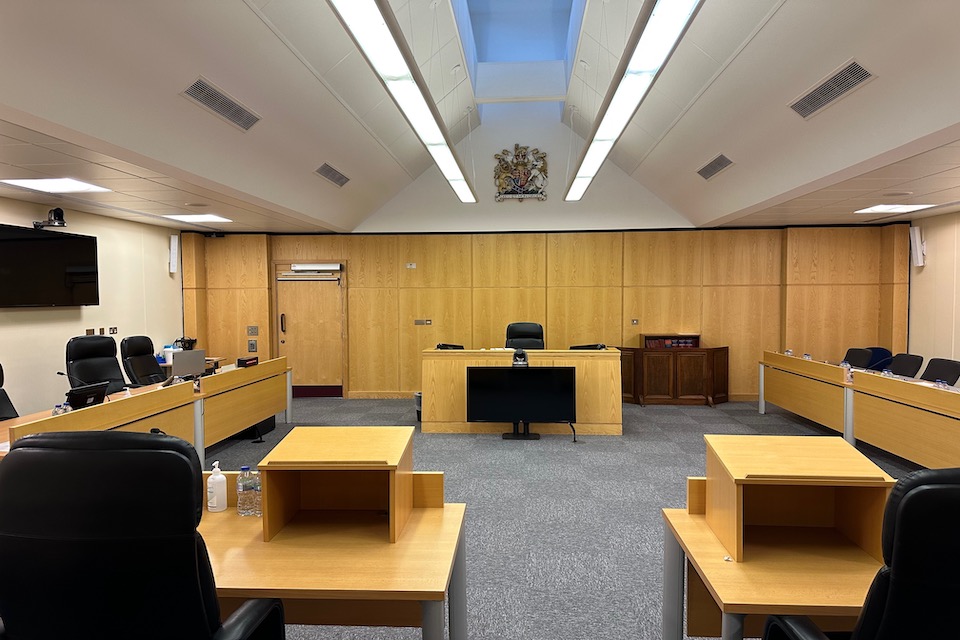Military
Introduction
This section provides a brief outline of the legal system which underlies the discipline of the British Armed Forces.
The material on this page is intended to be an informal guide to the Service Justice System and is not authoritative as to the law. Service law is to be found in the statutes, statutory instruments, regulations, and reports of cases decided by the superior courts; a brief list of some of the relevant statutes is given below.
Information about the Judge Advocate General, together with guidance on practice and procedure, can be found on the Judge Advocate General webpage.

Historical Background
The conduct of English soldiers was for many centuries regulated by the Court of the High Constable and Earl Marshal. From 1521 onwards, it was the ‘Court of the Marshal’ and, after the standing army had been brought into being in Cromwellian times, the office of Judge Advocate General was created in 1666 to supervise ‘Courts-martial’.
It has been held in continuous succession ever since, being expanded to cover Great Britain, and later the United Kingdom, the Royal Air Force, the Royal Navy, and all British land, air and naval forces overseas. Historically the responsibilities of the Judge Advocate General were very wide and included oversight of both prosecution and defence arrangements as well as the court.
Since 1948, the role has concerned the Court-martial process. From 1661 the office of Judge Advocate of the Fleet (JAF) existed to supervise the Royal Navy Courts-martial system, separately from the JAG. These two historic offices were amalgamated by the Armed Forces Act 2006, with the role of JAF subsumed into JAG. The Armed Forces Act 2006 repealed the three Service Discipline Acts of 1955/57, established a single system of Service law, and created the Court Martial as a standing court. It came into effect on 31 October 2009.
Judiciary
The Judge Advocate General is the Judicial Head of the Service Courts and has a team of Assistant Judge Advocate Generals (AJAGs).
All the judges are civilians, appointed through the independent Judicial Appointments Commission from the ranks of experienced barristers or solicitors in the same way as Circuit Judges. When conducting a particular trial, they are formally titled ‘The Judge Advocate’, and out of court they are generally referred to and addressed as ‘Judge’. In court the judges wear legal robes, comprising a bench wig and black gown, with a tippet (sash) in army red with navy blue and air-force blue edges.
All Judge Advocates also sit in the Crown Court. It is also possible for a High Court and Circuit Judge to be specified to preside in the Court Martial as a Judge Advocate.
More information about the Judge Advocates and the role of the Judge Advocate General and contact details for the Office of the Judge Advocate General can be found on the Judge Advocate General webpage.
Service Justice System
The main elements of the Service Justice System are:

The Court Martial
The Court Martial has global jurisdiction over all Service personnel and civilians subject to Service discipline (e.g. family members, civilian contractors, teachers, administrative staff when serving abroad).
Serious matters, including both offences against the civilian criminal law and specifically military disciplinary offences, may be tried in the Court Martial, which is a standing court. A Judge Advocate arraigns each defendant and conducts the trial which is broadly similar to a civilian Crown Court trial in all cases, even when dealing with a minor disciplinary or criminal offence.
The jury, known as the board, comprises between three and six commissioned officers, Warrant Officers and Chief Petty Officer/Staff Sergeant/Flight Sergeant, depending on the seriousness of the case. Having listened to the Judge Advocate’s directions on the law and summary of the evidence, they are responsible for finding defendants guilty or not guilty.
Following a finding or plea of guilty, the board joins the Judge Advocate to decide on sentence. The Court Martial has the same sentencing powers in relation to imprisonment as a Crown Court, including life imprisonment. Most of the sentencing powers in the Criminal Justice Act 2003 are also available in the Court Martial.
The Court Martial mirrors the Crown Court in practice, procedure and sentencing powers with important additional features:
- A large number of additional service disciplinary offences (some of which carry life imprisonment) are tried in the Court Martial;
- Trials are conducted with smaller Boards (juries) of usually three or six lay members, depending on the gravity of the case. Boards in cases involving serving personnel are made up of serving military personnel;
- Trials involving civilian defendants usually require a civilian board of up to six civilian members. With the exception of the size of the Board, procedure during trial and sentence is identical to the Crown Court;
- Judge Advocates direct lay members in detail at the start of each trial in relation to their duties and responsibilities (as per a jury) but also specifically in relation to the importance of the independence of their role from any chain of command or other Service influence and the need for all lay members to have an equal voice and vote regardless of disparity in rank. This is required to ensure the Court remains compliant with Article 6 ECHR;
- Sentencing proceedings for Service personnel convicted at trial or, in the event of a guilty plea are conducted together with the Board. The Judge Advocate (JA) directs the Board in relation to sentencing guidelines and principles, and has a casting vote;
- The Court Martial can pass the full range of custodial and non-custodial sentences available in the Crown Court (with the exception of POCA confiscation orders and disqualification from driving) and an additional range of sentences available under the Armed Forces Act 2006, including dismissal from service, detention for up to 2 years in military detention and reduction in rank. Almost all defendants in the Court Martial are serving military personnel of good character and the consequences of these sentences upon them and their families can be very significant. In every sentencing hearing, however serious, the lay board members of varying ranks require very careful direction, guidance and management. Sentencing hearings generally take over an hour;
- Appeal from the Court Martial, even for the most minor summary offences, is to the Court Martial Appeal Court (civilian Court of Appeal reconstituted for the CM);
- A significant number of hearings are conducted with prosecution and defence advocates and defendants on video link.
Summary Hearings by a Commanding Officer
Minor disciplinary and criminal matters are dealt with summarily by the Commanding Officer of the accused. The vast majority of matters are disposed of in this way at summary hearing, which forms one of the foundations of the disciplinary system of the armed forces. A Commanding Officer has powers of punishment up to 28 days’ detention, which may be extended to 90 days’ detention with approval from Higher Authority. In all cases an accused person may elect for trial in the Court Martial rather than appear before their Commanding Officer, or may appeal to the Summary Appeal Court after the event.
Summary Appeal Court
The accused, if dissatisfied with the outcome of a summary hearing, always has the right of appeal to the Summary Appeal Court, which is conducted by a Judge Advocate accompanied by two officers. This is modelled on an appeal from a Magistrates’ Court to the Crown Court.
Court Martial Appeal Court
The avenue of appeal for a convicted defendant, subject to obtaining permission to appeal, is to the Court Martial Appeal Court (as the Court of Appeal Criminal Division is named when dealing with Service cases), and ultimately to the Supreme Court. The procedure in the Court Martial Appeal Court is identical to the civilian jurisdiction.
Service Civilian Court
Civilians who are officials attached to the Services overseas, or dependants of Service personnel resident overseas (for example in Germany or Cyprus) may be tried for minor offences by the Service Civilian Court (which consists of a Judge Advocate sitting alone), or, for more serious matters, may be tried in the Court Martial. This is then usually constituted with an all-civilian board acting as a jury; in such cases the Judge Advocate sentences alone.
Custody, Search Warrants and Arrest Warrants
If a Service person is to be detained in custody, or if private premises need to be searched in the course of investigations, or if a person needs to be arrested, the authority of a Judge Advocate is required. The Judge Advocate must be satisfied that the continued detention, or the search or arrest, is legally justified. Such cases are often heard by video link and a judge is on duty every day of the year to rule upon urgent applications if required.
The Military Court Service
The administration of the courts themselves is managed by the Military Court Service (MCS), which is part of the Ministry of Defence, in the same way that HM Courts and Tribunals Service, part of the Ministry of Justice, manages the civilian courts.
The Court Martial may sit anywhere in the world and is portable so as to support the operational effectiveness of the Armed Forces. However, most trials take place in the Military Court Centres in the UK which are in:
- Bulford (Wiltshire)
- Catterick (Yorkshire)

The Court Martial may also sit from time to time in Northern Ireland (Aldergrove), Germany (Sennelager) and Cyprus (Episkopi). MCS arranges, funds and supports trials at these centres and sometimes at other venues in the UK and overseas.
Communications about particular cases must be addressed in the first instance to:
The Military Court Service:
The Military Court Service Headquarters
The Military Court Centre,
Wing Road Ward Barracks,
Bulford Camp,
Wiltshire SP4 9NA
Telephone: 01980 672071
Email: MCS-Group@mod.gov.uk
